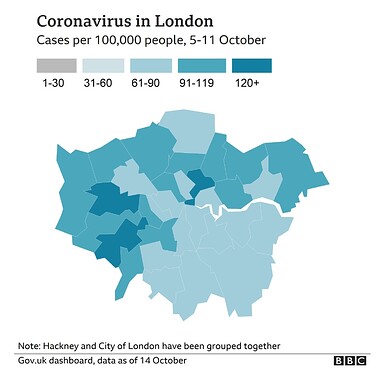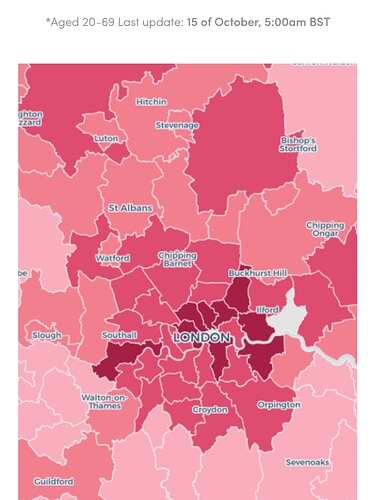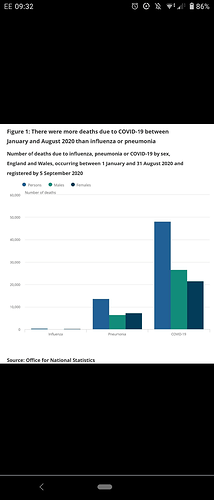I appreciate that the simpler the better but it is all to do with contacts and levels of risk. I’m a single person with several single friends. None of us are party-animals and we are all working from home with very limited contacts. With darker nights and colder temperatures, meeting up outdoors is getting harder. In my last few ONS COVD surveys, my number of socially distant contacts has consistently been <1-5 across 7 days.
A family group who has kids at school and where one or both parents are going into the office or work in a shop/pub or as a skilled trade, will have a much greater potential circle of contacts. Add in outdoor playdates/family activities etc and it rapidly rises.
The key thing is risk. If your level of risk is higher because of your work, journeys, friends, then you should be reducing it in other places. If your level of risk is lower because you’re not seeing anyone, then you should have a little more freedom.
My friends and I are all very low risk but because, for the most part, they’ve formed bubbles with elderly parents so they can still visit and drop off shopping, we can’t see one another. I have a colleague who goes out virtually every night to outdoor covered bars to see different groups of six and has a partner who works in a central London shop. Both entirely within the current rules but entirely different levels of spreading risk.
In an ideal world, we’d all have the app and it would be smart enough to count how many different people we’d come into 15-minute contact with and where. Everyone would have a risk ration for the week/month - once you’ve used it up, you’ve effectively locked yourself down. There would still be rules on group numbers etc but it would feel a more effective way of reducing the potential spread. If you’ve modified your behaviour to be less risky, then you probably wouldn’t hit them.





























